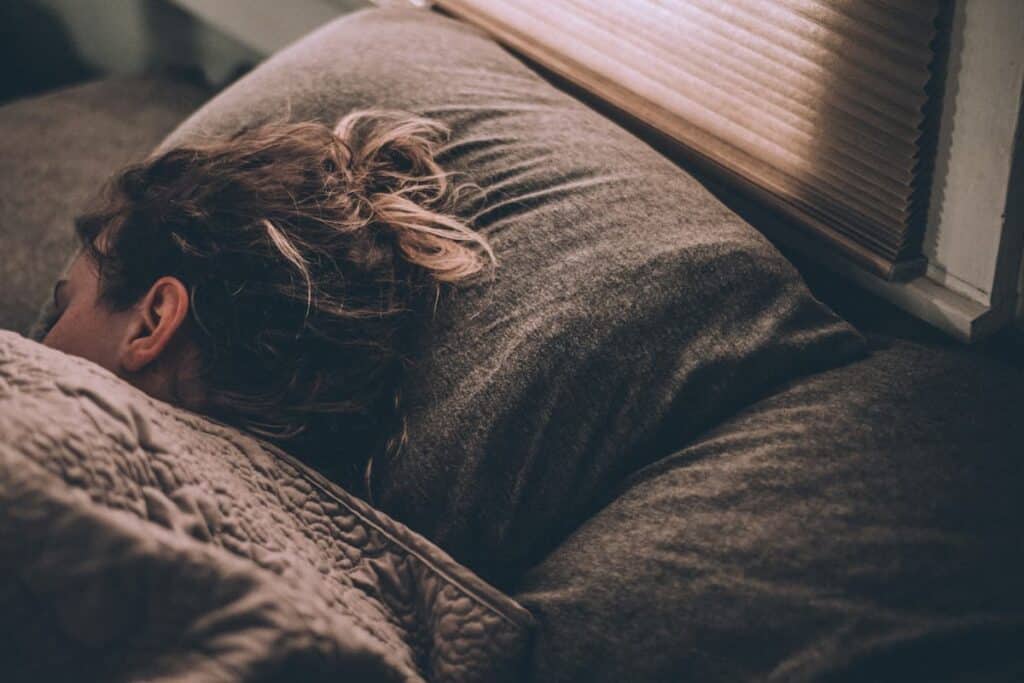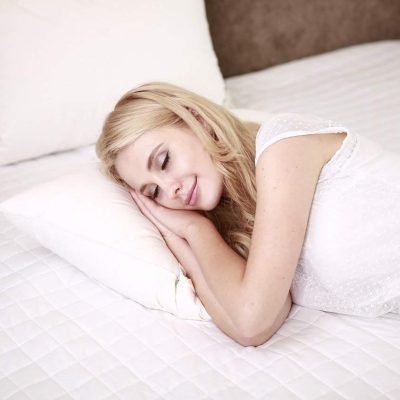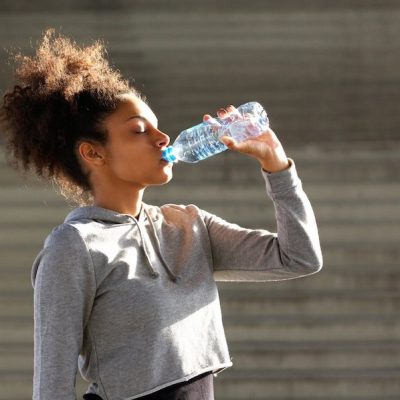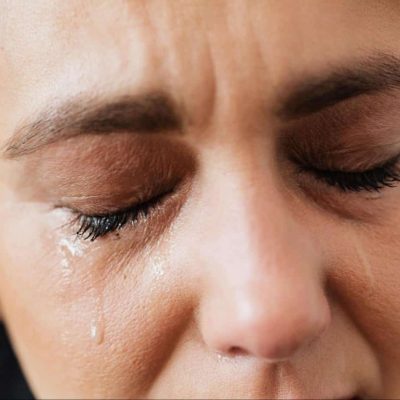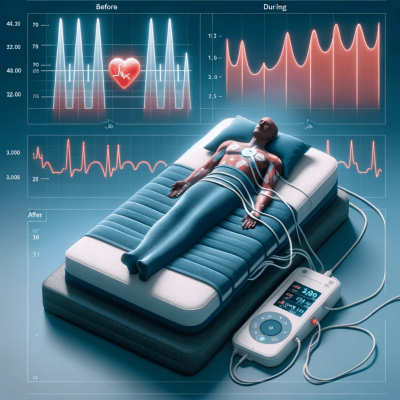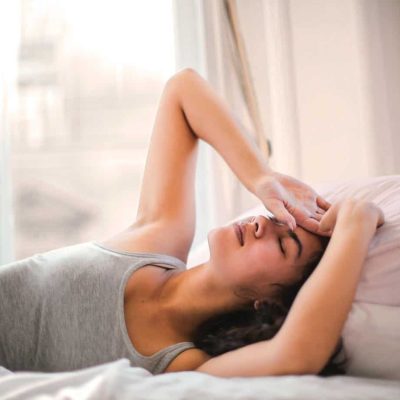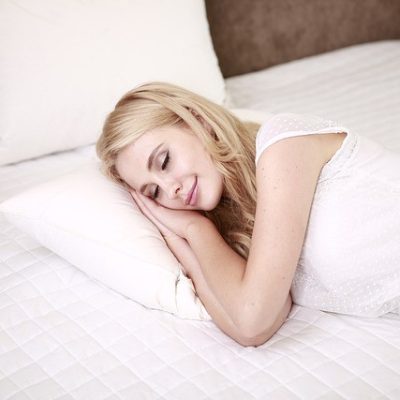In today?s news, we will look into the growing evidence that indicates that Black, Asian, and Hispanic or Latino communities continue to experience higher rates of sleep deprivation and sleep disorders like obstructive sleep apnea. Additionally, a new app is designed to aid people who suffer from sleep apnea while driving. Meanwhile, a study found that compared to other pharmacologic therapies for common sleep problems, benzodiazepines are associated with a higher risk of drug overdose among young people. According to a study by The National Institute of Health, insomnia symptoms that last longer than a month are linked to daytime impairment, psychological distress, increased job absence, poor interpersonal functioning, higher risk for psychiatric problems, and increased chance of recurrence.
Table of Contents
ToggleDaylight Saving Time highlights the unequal effects of sleep deprivation in communities of color
Original Source: Daylight Saving Time sheds light on lack of sleep?s disproportionate impact in communities of color
This month, many Americans received more sleep than normal as Daylight Saving Time ended.
Lack of sleep and sleep disorders, such as obstructive sleep apnea, are more common among Black, Asian, and Hispanic or Latino cultures. These imbalances can have long-term health effects, even increasing the risk of chronic diseases.
US Daylight Saving Time, which extends daylight hours to cut electricity use, has long been contentious.
The American Academy of Sleep Medicine, the Sleep Research Society, and other medical groups have called for a permanent standard time without spring and fall time changes.
Dr. Beth Malow, professor of neurology and pediatrics and director of the Vanderbilt University Medical Center Sleep Division in Nashville, said in a news release this month that daylight saving time increases sleep loss, circadian misalignment, and health concerns. She wrote a September Sleep paper on the health benefits of permanent standard time.
In March, the US Senate unanimously passed the Sunshine Protection Act, which would make Daylight Saving Time permanent across the country ? meaning there would be no reverting to ?standard time? from early November through mid-March ? but the legislation would have to pass the House and earn President Joe Biden?s signature before becoming effective in November 2023.
Some sleep experts worry that changing standard time twice a year may worsen sleep health inequalities.
Poor sleep is linked to obesity, hypertension, type 2 diabetes, cardiovascular disease, and breast and colon cancers. “Many of these health effects are more widespread in the Black community,” said Chandra Jackson, a researcher and epidemiologist with the National Institute of Environmental Health Sciences who studies sleep disparities.
?Experimental and observational research have connected sleep to these health effects. Thus, sleep may be important,? she stated. Sleep health is modifiable.
In terms of sleep health inequalities, White individuals also experience a lack of sleep and its health effects, but persons of color seem to experience them more, which is thought to be linked to US social structures.
Sleep’s effects
Sleep restores cells. According to the National Institutes of Health, quality sleep raises and lowers your heart rate, blood pressure, and respiration, which may benefit cardiovascular health, and releases hormones that repair cells and regulate energy consumption. Hormone fluctuations affect weight.
In October, PLOS Medicine reported that 50-year-olds who sleep five hours or less have an increased risk of various chronic diseases as they age.
In October, the American Heart Association journal released data showing that cardiovascular health guidelines that incorporate sleep are better at predicting heart disease risk than those that do not.
Immune function, cardiovascular health, and memory development require sleep. Dr. C?sar Caraballo-Cordovez, a Yale Center for Outcomes Research and Evaluation postdoctoral associate who has examined racial and ethnic sleep disparities, stated that without enough sleep, the body and brain may not function efficiently.
?Short sleep duration has been associated with higher risk of adverse medical events and conditions, including diabetes, obesity, hypertension, heart disease, impaired cognitive functions, and death,? Caraballo-Cordovez wrote in an email. The consensus is that most adults need at least seven hours of sleep per day.
Caraballo-Cordovez, Jackson, and their colleagues found that racial and ethnic sleep duration discrepancies in the US are worsening. Their April JAMA Network Open study indicated that Black and Hispanic or Latino US individuals had a higher prevalence of short and extended sleep duration between 2004 and 2018. Long sleep is above nine hours, whereas short sleep is under seven.
During the study period, all groups had a substantial rise in insufficient sleep, while Black and Hispanic or Latino adults had a 6.39 and 6.61 percentage point increase in short sleep, respectively, compared to 3.22 for White persons.
Caraballo-Cordovez said Black and Hispanic/Latino Americans are more likely to experience sleep-disrupting social and environmental influences.
?Among those are housing conditions, noise pollution, light pollution, air pollution, stress from different sources ? including perceived racial discrimination ? and jobs or working conditions,? he said. The convergence of all those factors may explain why getting the recommended amount of sleep ?may be less common among Black adults than among White adults.?
Jackson and Caraballo-Cordovez agree that further research is needed to understand sleep disparities by race.
Quality sleep’s “permanent obstacles”
Jackson defines structural racism as the ?totality of ways in which societies foster racial discrimination through mutually reinforcing systems of housing, education, employment, wages, benefits, credit, media, health care and criminal justice,? which may contribute to many social and environmental determinants of health, including sleep-deprivation.
Jackson said she often thinks about how the shooting deaths of Breonna Taylor in Louisville in March 2020 and George Floyd’s 4-year-old grandniece in Houston on New Year’s Day both happened while they were asleep and how structural racism in the US can create conditions that make such incidents more likely in Black communities. She stated research was needed.
The history of discriminatory mortgage lending and appraisals in the US affects the conditions in which people of color live; predominantly white school districts tend to get more funding than districts serving people of color, affecting the quality of education some people of color receive; and even hair discrimination may contribute to some Black women using potentiall
?These policies and practices can cause inequities due to the maldistribution of health-promoting or harmful resources across ethnic groups and can promote discriminatory beliefs,? Jackson added. That is, discriminatory policies and practices across sectors of society create the physical and social conditions that make it harder for Black families to sleep well and grow up healthy. Luckily, these regulations and behaviors are modifiable.?
She said that everything that generates physical and psychological stress, which is more common in Black communities, is a threat to sleep health.
The US Department of Health and Human Services’ Healthy People 2030 plan aimed to improve health by helping people get adequate sleep, with goals such increasing the number of adults with sleep apnea who see a doctor and the number of schools that start later. Caraballo-Cordovez, who is not involved in the Healthy People programs, highlighted that improving sleep health was a national goal.
He noted that ?the impact of efforts focused on increasing sleep knowledge and practices ? although vital and necessary ? may be limited if they do not address the persisting constraints that disproportionally prohibit Black folks from obtaining and maintaining a healthy life.?
New app helps sleep-apnea drivers drive safely
Original source: New app aims to help drivers with sleep apnea stay safe behind the wheel
Half of the nation’s 3.5 million long-haul truck drivers have OSA, a respiratory illness that reduces or stops breathing during sleep.
It could harm all highway users. Safety research shows those drivers are five times more likely to crash.
The FMCSA has found that treated drivers are as safe as untreated drivers.
FMCSA requested feedback on updating its OSA medical manual. Truck drivers must undergo sleep apnea tests to maintain their medical certificates.
Traditional testing and treatment are inconvenient and expensive.
Given the prevalence of OSA in drivers, this is also a quality of life concern. OSA-treated drivers live healthier, fuller, and longer. OSA increases stroke risk by 60% and heart attack risk by 30%.
Dr. Karen Underwood, chief medical officer for Resonea, an Arizona-based med-tech company that advances sleep health technology, responded to confusion over the FMCSA sleep apnea proposal by saying that Resonea is solely focused on sleep help and that if regulations are needed for OSA testing, they must be clear and concise.
?We believe in focusing on enhancing quality of life through better sleep and offering drivers the chance to make that decision,? Underwood added.
Harvard School of Medicine estimates 50% of commercial drivers have OSA. FMCSA says OSA-treated drivers are as safe as others. Due to these two simple realities, we believe testing and treatment should be easy and affordable.
Underwood said FMCSA’s sleep apnea testing advice should be well-researched and provided clearly and consistently. “FMCSA guidance should reflect all stakeholders, including drivers, medical professionals, law enforcement officials, and motor carrier executives.” Underwood added.
She claimed FMCSA recommendations might improve driver health and keep them driving longer if followed. OSA can cause heart disease, diabetes, and other disorders that afflict many drivers. Health issues can shorten driving careers and quality of life. However, properly diagnosed and treated drivers are just as safe.
?We want Netflix for sleep apnea testing,? Underwood added.
She would provide testing and treatment on a driver’s schedule, at a cheap cost, anytime and everywhere.
Underwood said the business should remove sleep apnea diagnostic and treatment restrictions. ?Testing and treatment must be discreet, inexpensive, comfortable, and convenient.?
The patient, not sleep center schedules, hardware availability, or shipping needs, controls the new software. A smartphone and app are enough to test for apnea.
Underwood deemed existing FMSCA recommendations “unclear and inconsistent”?especially planned Medical Examiners Handbook changes.
She said this has frustrated carriers, medical examiners, and most crucially, drivers who require direction on the disease and its possible impact on their livelihood and health.
Underwood recommended research-based, clear, simple, and consistent instruction.
Traditional testing needs in-lab sleep exams and travel, Resonea explains. Traditional home sleep tests need equipment upkeep, disinfection, and shipping/returning.
The best comparison: Old-school movie viewing required being available when it was showing, traveling to pick up a DVD, or getting one in the mail. Resonea software transforms testing into an on-demand, anywhere/anytime service like Netflix, Disney, Amazon Prime, and others.
http://www.Resonea.com has details.
Drug Overdose in Young People With Sleep Disorders Linked to Benzodiazepines
Original source: Benzodiazepines Tied to Drug Overdose in Young People With Sleep Disorders
A study published online on Nov. 22 in JAMA Network Open found that benzodiazepines increase the risk of drug overdose in young individuals compared to other sleep problem therapies.
Greta A. Bushnell, Ph.D., from Rutgers University in New Brunswick, New Jersey, and colleagues examined whether benzodiazepine treatment for sleep problems increases the risk of drug overdose in young people (2009?2018) compared to other pharmacologic therapies (trazodone, hydroxyzine, zolpidem, zaleplon, and eszopiclone). 23,084 young people (10?29 years old) with sleep disorders started benzodiazepine treatment and 66,706 started comparator medication.
In an adjusted analysis, benzodiazepine initiators had a higher risk of drug overdose than comparator treatment initiators at six months (intention-to-treat analysis: hazard ratio, 1.25; 95 percent confidence interval, 1.03 to 1.51; as-treated analysis: hazard ratio, 1.44; 95 percent confidence interval, 1.14 to 1.80). Young people with recent prescription opioid fills had a stronger connection than those without (as-treated analysis: adjusted hazard ratios [95 percent confidence intervals], 2.01 [1.24 to 3.25] versus 1.31 [1.00 to 1.70]).
“This study suggests that the heightened risk of drug overdose with benzodiazepine treatment compared with alternative pharmacologic therapies for sleep disorders is an essential safety issue when treating young people,” the authors write.
Summary of today?s sleep health news
To sum it up, many Americans slept a little bit longer than usual this month as the United States turned back the clock an hour to mark the conclusion of Daylight Saving Time, but not everyone did. Growing evidence indicates that Black, Asian, and Hispanic or Latino communities continue to experience higher rates of sleep deprivation and sleep disorders like obstructive sleep apnea. These disparities can have long-term negative effects on physical health, even increasing the risk of developing some chronic diseases. In a news release this month, Dr. Beth Malow, professor of neurology and pediatrics and head of the Vanderbilt University Medical Center Sleep Division in Nashville, stated that “daylight saving time is associated with increased risks of sleep loss, circadian misalignment, and adverse health consequences.”
Furthermore, up to half of the 3.5 million long-haul truck drivers in the country have obstructive sleep apnea (OSA). The good news is that the Federal Motor Carrier Safety Administration (FMCSA) has decided that drivers who have received treatment can be just as safe as those who do not have the illness. Dr. Karen Underwood, chief medical officer for Resonea said that the new software puts the patient in control, not sleep center schedules, hardware availability or shipping requirements. All one needs to test for apnea is a smartphone and the app.
Lastly, according to a study published online Nov. 22 in JAMA Network Open, benzodiazepines are linked to a higher risk of a drug overdose in young people than other pharmacologic therapies for common sleep disorders. The authors state that the study’s findings “indicate that the heightened risk of drug overdose with benzodiazepine treatment compared with alternative pharmacologic therapies for sleep disorders is a significant safety issue when treating young people.”

